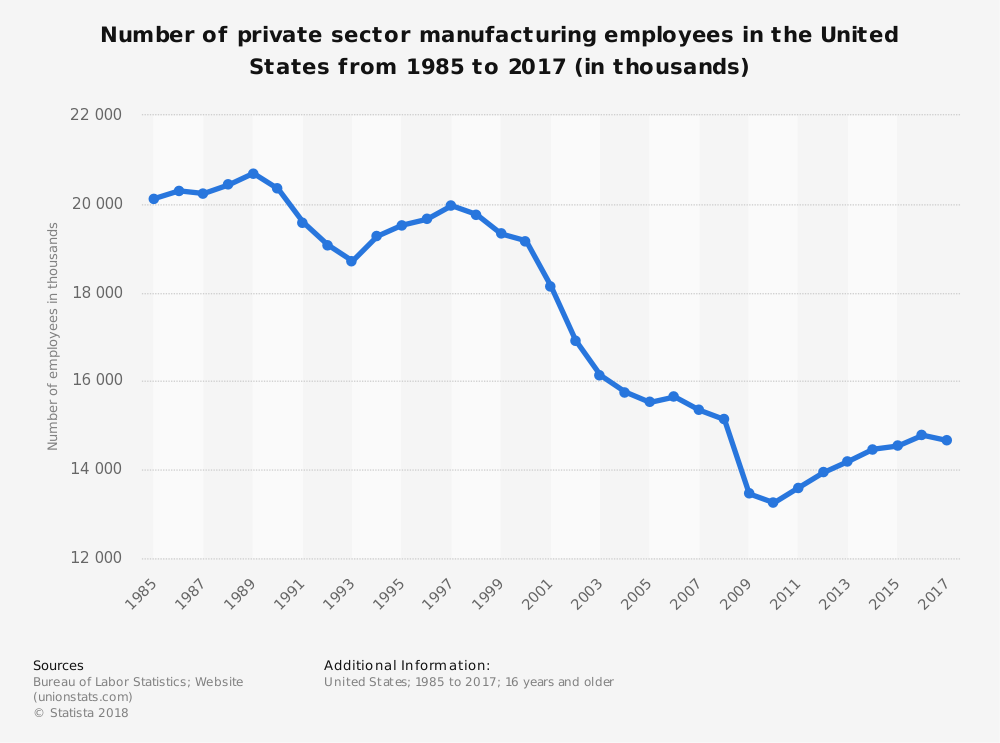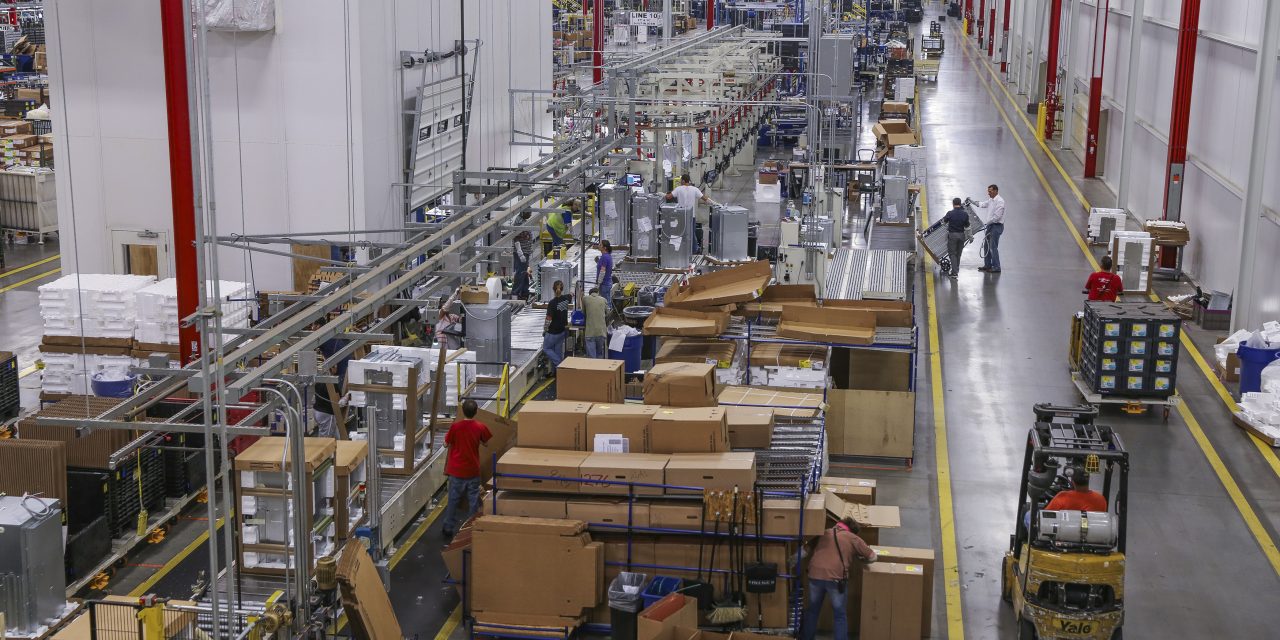President Trump continues to describe the rebound in U.S. manufacturing in glowing terms, though the gains are much more modest than what’s trumpeted by the White House.
As the graph below demonstrates, manufacturing jobs have slowly made a comeback starting in 2012, according to the federal Bureau of Labor Statistics. But progress has been slow and the manufacturing sector is certainly not “flourishing,” as the president claims.
To be clear, the Trump administration has established a track record on manufacturing job growth that far exceeds what we experienced under President Obama. But that’s not saying much.

So, we are dealing with hundreds of thousands of jobs gained vs. the loss of millions.
Still, die-hard Democrats would be wise not to overlook the gains made in employment overall under the Trump economy.
For those eager to engage in a partisan scorecard, most of those 6 million jobs lost came during the George W. Bush administration. Under Obama, who took office during an economic crisis, a net loss of 192,000 manufacturing jobs occurred, though the uptick in his last two years in office was 73,000 jobs in manufacturing. Trump came into office when the job market was on a roll, and the gains keep rolling in.
At an Oval Office ceremony on Thursday, Trump said this: “Last year, we saw the biggest increase in manufacturing employment in more than 20 years.” As the graph shows, manufacturing employment hit 17.1 million in January 2001 and then plummeted, with only minimal gains since. Trump’s “more than 20 years” claim is highly misleading.
Another way to look at this trend, the hollowing out of the American manufacturing sector, is that currently 8.5 percent of all workers are engaged in manufacturing employment. That’s the lowest percentage since the Bureau of Labor Statistics began keeping records.
During that ceremonial signing of an executive order, the president engaged in some of his awkward hyperbole:
“I love the Rust Belt, and the Rust Belt is no longer the Rust Belt as far as I’m concerned. It’s vibrant. It’s doing so well … it’s flourishing.”
Anybody who lives in Michigan knows that isn’t true, especially when tariffs are hurting factory production and the domestic auto industry faces another somewhat shaky period.
Trump added this about the manufacturing world: “(It’s) a beautiful world, a high-paying world, and very important for our country.” In a new report, the Economic Policy Institute, a labor-backed research group, pointed out why an emphasis on boosting manufacturing is so important. For every new manufacturing job, EPI concluded, another seven spin-off jobs are created. And many of those offer decent wages and benefits.
Maintaining a focus on manufacturing is a smart move by Trump. But he should do that by keeping his eyes on the prize rather than patting himself on the back.





